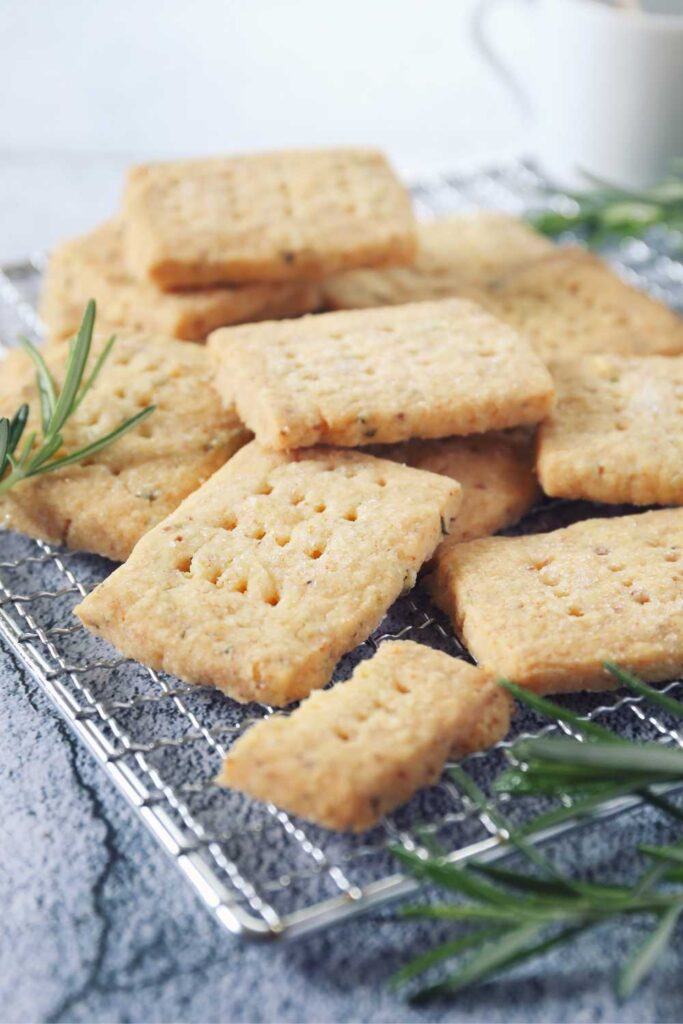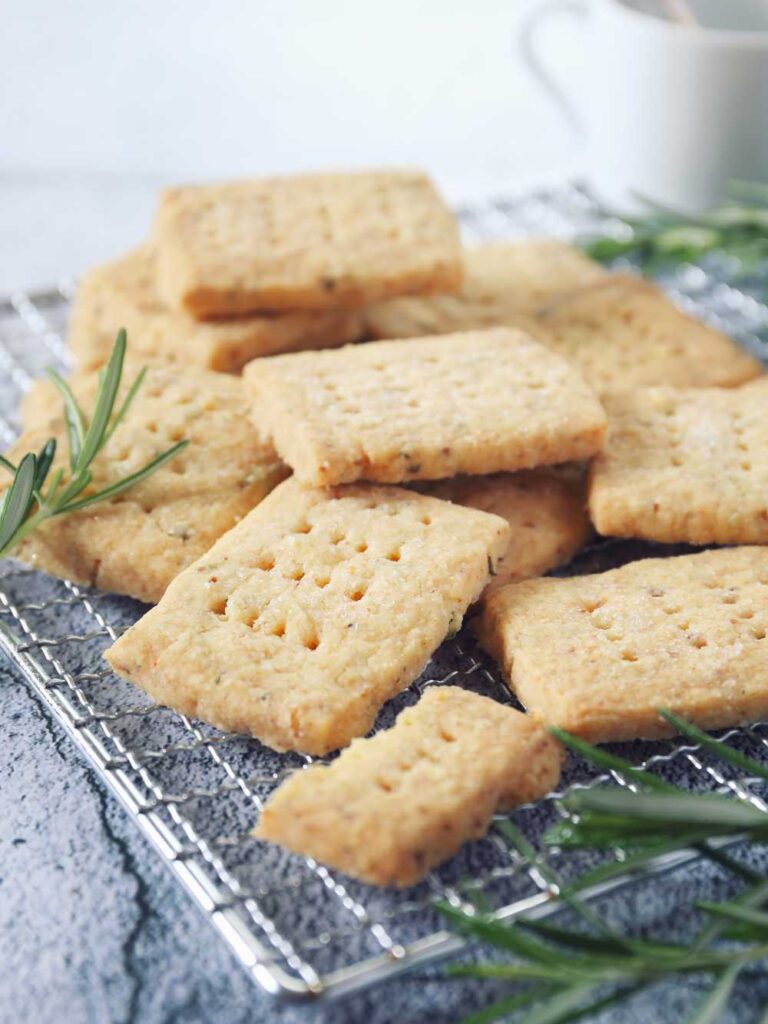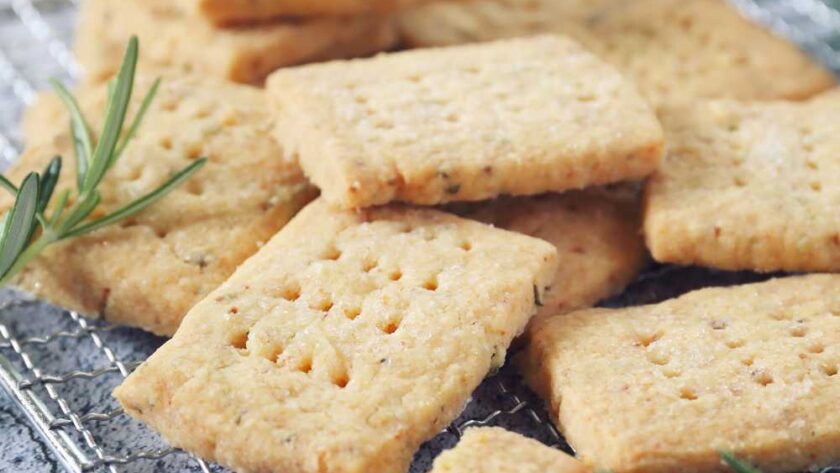There’s something quietly magical about baking shortbread. No loud mixers, no melting chocolate or racing timers — just a bit of gentle creaming, a cloud of flour in the air, and that familiar buttery smell slowly filling the kitchen. It’s the kind of recipe I reach for when the world feels a bit too fast, and I need to slow things down, one soft cookie at a time.
This Bero Shortbread is an old-school classic. It’s the kind of biscuit my nan would serve on a plate with a crocheted doily underneath, alongside a proper cuppa (milk first, of course). Crumbly, tender, and buttery to the core — and so simple it almost feels like cheating. A bit of flour, some butter, sugar, and you’re halfway there.
It’s the sort of bake that doesn’t need fanfare. Just a quiet afternoon, maybe a bit of drizzle outside, and a biscuit that practically melts on your tongue. Bliss.
Why you’ll love it
- Only five ingredients — all pantry staples.
- Crumbly, rich texture that’s deeply satisfying with tea.
- The dough’s super forgiving — great for kids or beginners.
- Easy to customise — lemon zest, vanilla, even chocolate chips if you dare.
- They store well and make a lovely little gift in a tin.
- You’ll feel like a 1950s domestic goddess, and that’s not a bad thing.
Ingredients
- 250g unsalted butter
- 125g caster sugar
- 250g all-purpose flour
- 125g cornflour
- A pinch of salt
Optional variations
- Zest of 1 lemon
- 1 teaspoon vanilla extract
How to make it
Cream it slow and steady:
In a big mixing bowl, cream together the butter and sugar until it’s soft and light. You can do this with a wooden spoon or a mixer — no judgement. Just don’t rush it.
Sift in the dry bits:
In a separate bowl, sift together the plain flour, cornflour, and salt. If you’re using lemon zest or vanilla, add them now. The cornflour is what gives these that melt-in-the-mouth thing.
Bring it together gently:
Gradually stir the dry ingredients into the butter mixture. Don’t overmix — stop as soon as it looks like a soft dough. Overworked dough makes tough biscuits (ask me how I know).
Chill and relax:
Shape the dough into a ball, wrap it in cling film, and pop it in the fridge for about 30 minutes. Gives you time for a tea break — or a clean-up, if your kitchen looks anything like mine.
Roll and shape with love:
Roll out the dough on a lightly floured surface — about 1cm thick is traditional, but do what feels right. Cut into shapes with a biscuit cutter, or just slice into neat-ish squares. No pressure for perfection.
Bake and breathe:
Place them on a lined baking tray, leaving a bit of space between each. Bake at 180°C (350°F) for 12–15 minutes, until the edges are just starting to colour. Keep a close eye — they go from perfect to oops very quickly.
Cool before tasting (if you can wait):
Let them cool on the tray for a few minutes, then transfer to a wire rack. They’ll firm up as they cool. And yes, you may sneak one warm. I won’t tell.

Common mistakes and how to dodge them
Why did my shortbread spread too much?
Your butter might’ve been too soft or warm. Chill the dough properly before baking and avoid overhandling it.
Why is it too crumbly to roll?
Too much flour or not enough mixing. Try letting the dough rest a bit more, or add a tiny splash of milk to bring it together.
Why is my shortbread tough?
It’s likely been overmixed. Remember: tender hands, gentle mixing, always.
My edges browned too quickly!
Your oven might run hot — try baking at a slightly lower temp or check them a minute early next time.
Storage and reheating
- Room temp: Store in a tin or airtight container — they’ll stay fresh for up to a week.
- Fridge: Not really necessary unless your kitchen is tropical.
- Freezer: Freeze unbaked dough (wrapped) or fully baked biscuits. Thaw before serving or reheat briefly to freshen.
- Reheating: A couple of minutes in a warm oven (160°C/320°F) will perk them right back up. Avoid the microwave — soggy biscuits are sad biscuits.
Frequently asked questions
Can I make these gluten-free?
Yes — use a gluten-free flour blend that includes xanthan gum. They’ll be a bit more delicate, but still lush.
Do I have to use cornflour?
Cornflour gives that delicate, powdery finish, but if you haven’t got it, just use all flour. They’ll be more biscuit than shortbread, but still tasty.
What if I want them sweeter?
You can add a tablespoon or two more sugar — but don’t go overboard or you’ll lose that classic crumbly texture.
Can I double the batch?
Absolutely. They freeze well too, so you can stash a few away for a rainy day.
Nutrition Facts (Per Serving)
- Calories: 80
- Total Fat: 5g
- Saturated Fat: 3g
- Cholesterol: 15mg
- Sodium: 30mg
- Carbohydrates: 8g
- Sugar: 2g
- Protein: 1g
Try More Recipes:

Bero Shortbread Recipe
Description
A crumbly, buttery biscuit that’s perfect with a cuppa — classic shortbread comfort with just five ingredients.
Ingredients
Instructions
- Cream butter and sugar until fluffy.
- Sift in flour, cornflour, and salt.
- Mix gently to form dough, then chill for 30 minutes.
- Roll to 1cm thick, cut into shapes or squares.
- Bake at 180°C (350°F) for 12–15 minutes.
- Cool on a rack until firm.
- Store in a tin and enjoy with tea.
Notes
- Chill the dough for clean edges and better shape.
- Don’t overwork the dough — crumbly is the goal.
- Bake just until the edges start to colour.
- Add lemon zest or vanilla for a flavour twist.

